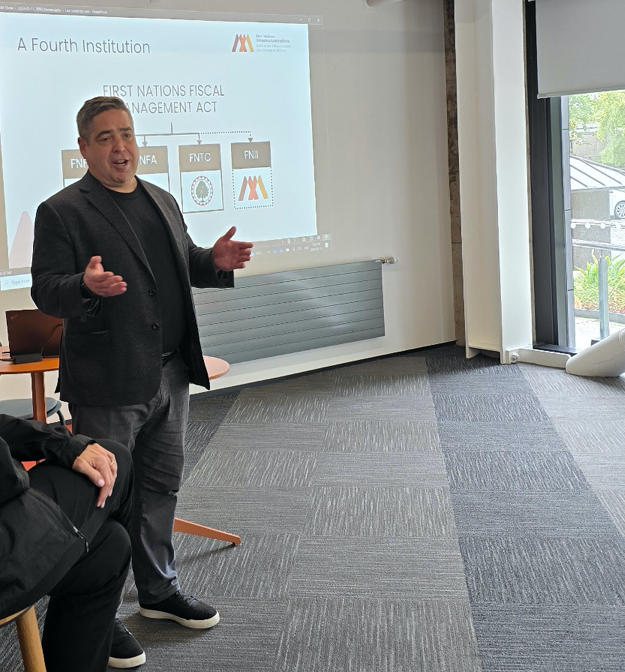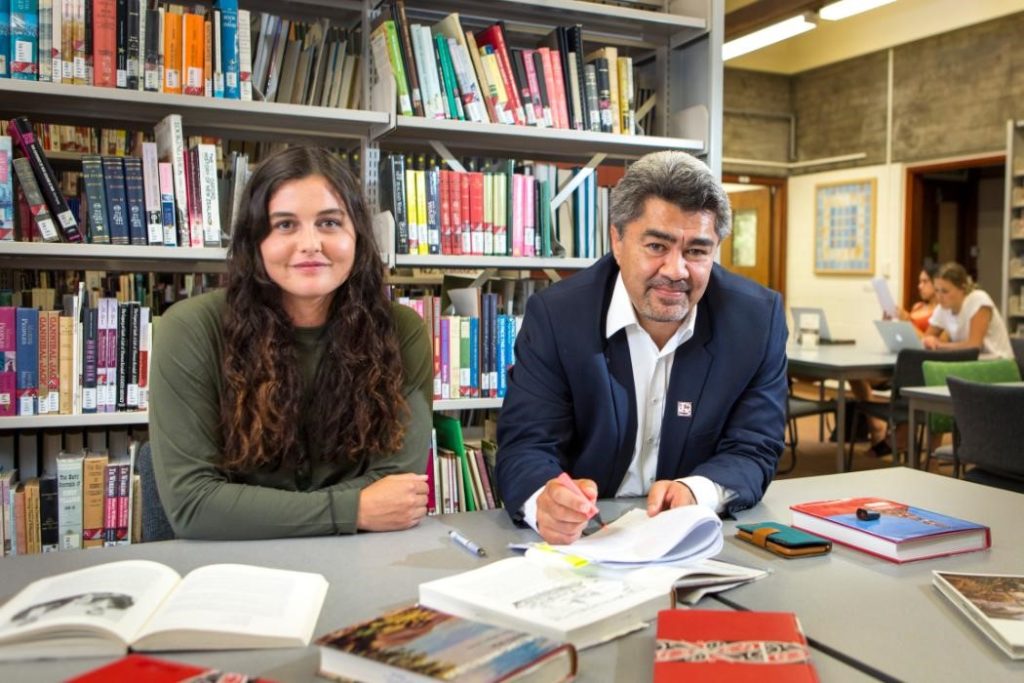Professor Te Maire Tau (right) is the director of the Ngāi Tahu Research Centre. He has been instrumental in creating the partnership between the centre and The Tulo Centre
A program that brought together Indigenous leaders from Canada and New Zealand explored the Canadian approach to Indigenous infrastructure as modeled by the First Nations Infrastructure Institute (FNII). The exploration was part of a two-week course called Comparative Indigenous Economic Systems that was offered earlier this year at the University of Canterbury in New Zealand.
The Ngāi Tahu Research Centre and the Tulo Centre of Indigenous Economics jointly offered the course, which brought together approximately 20 participants who work in Indigenous administrations in their respective countries.
The Ngāi Tahu Research Centre was founded to be a leader in Indigenous scholarship and provide a centre for the intellectual capital and development of Ngāi Tahu, the principal Māori iwi (people) of the southern region of Aotearoa. (The Maori name for New Zealand means ‘land of the long white cloud.’)
The Tulo Centre offers University-accredited certificate programs in First Nations Tax Administration, First Nations Applied Economics and First Nations Land Management. FNII has been collaborating with the Tulo Centre for the past three years talking to students about best practices in developing Indigenous infrastructure projects.
Students from the Tulo Centre and Māori students from the Ngāi Tahu Research Centre at the University of Canterbury in Ōtautahi (Christchurch) have been studying Indigenous economics together since 2020 in what began as an informal pilot arrangement.
FNII Technical Advisor Jason Calla attended the class, during which time he took the participants through FNII’s approach to building a business case for an infrastructure project. “We think the FNII process could be equally applied to a project in Canada on First Nation lands or a Ngāi Tahu project in New Zealand,” said Jason.
The Ngāi Tahu have a successful real estate portfolio, the result of strategic property investments. Ngai Tahu settled a claim in 1998 and received an apology from the Crown and $170 million. Ngai Tahu Holdings are now worth more than $1 billion and include a large shopping centre, housing, parkades, and office buildings.
“There is tremendous experience with property development, but Ngai Tahu do not currently collect what they call the rates – what we call property taxes,” said Jason, who says the Ngāi Tahu are exploring what it would mean to assert that jurisdiction over their lands.
“Whereas in Canada, some First Nations governments are choosing to assume jurisdiction on their lands and the ability to levy property tax, for example, and to administer financial management and administration laws. And now – most recently – to assume jurisdiction over their infrastructure assets, which is where FNII comes in.”
The Ngāi Tahu have a keen interest in learning how the FMA institutes work and how they might apply in their situation.
“Their question is ‘how can we collect the rates and then how can we provide the infrastructure and have more of a say in the infrastructure – not only for the buildings we have in the urban areas but also in communities in rural areas,” said Jason. “They want the ability to improve the infrastructure in their communities.”

FNII Technical Advisory Jason Calla describes FNII’s approach to First Nations infrastructure during the Comparative Indigenous Economic Systems course.
Jason says he learned a lot from the course. One discovery that impressed him is the long-term nature of Ngāi Tahu planning. For example, one research project is studying infrastructure resilience with an outlook for 500 years. He recalls Chief Mike LeBourdais (Tulo Centre Chair) saying, “That puts our ‘seven generations’ view in perspective!”
Jason was also struck by the strength of the Ngāi Tahu culture and how successful they’ve been in incorporating it – not just into the architectural design of all their developments but into those of other buildings as well. A number of factors account for this. One is the large tribal membership (about 70,000 people) that speaks one language, giving the Ngāi Tahu a strong presence in the region. The other was the need to re-build many facilities following the devastating earthquake of 2011.
“You can see the influence in the city, including a conference centre and a new stadium that will be the second largest in New Zealand,” said Jason. “The influence makes their culture visible in their territory.”
The Tulo Centre and the Ngāi Tahu Research Centre will continue to work together. The two centres and their host universities (Thompson Rivers University and the University of Canterbury) renewed their existing memorandum of understanding in August, 2023. The agreement commits them to continue to deliver accredited certificate programs in First Nation tax administration, applied economics and lands governance.
FNII is already seeing a development from the New Zealand experience. Jason has recently met with representatives of the Osoyoos First Nation in southern B.C. after one of its members participated in the March program.
If your First Nation is interested in learning more about FNII, email info@fnii.ca

